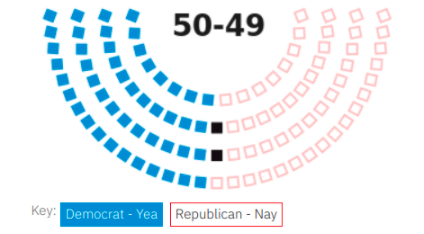The American Rescue Plan Act of 2021

April 3, 2021
The American Rescue Plan Act of 2021 had a complicated path through the government before being signed by President Joe Biden on March 11th, 2021. We first saw it pass through the House, go to the Senate where changes were made, sent back to the House, passed again, and sent to Biden who signed it. The $1.9 trillion bill granted aid and funds many different sectors of our country. The economic relief included in the bill was heavily geared toward low-income and middle-class Americans, who benefit from the direct payments, extension of expanded unemployment benefits, food stamps and more. The bill contained little aid to high income-earners, who largely retained their jobs during the pandemic.
What is included:
As mentioned previously, the bill had insanely many elements to it. Some key parts included:
- Extending extended unemployment benefits
- House Democrats had a goal of passing the entire bill before many benefits like this would expire, on March 31st, 2021.
- The bill that first passed through the House, passed with a $400 weekly supplement, but the Senate changed this to $300
- $1,400 “stimulus checks” to individuals
- Once again, changes were made to this part of the bill, in the Senate where they put a tighter cap on who receives this benefit
- Unlike in earlier rounds of payments, adult dependents like college students were eligible
- Most of the bill would be considered COVID-19 funding including:
- $50 billion to the Federal Emergency Management Agency for vaccine distribution and assistance.
- $47.8 billion on COVID-19 testing, mitigation, and transmission prevention, including diagnosis, tracing, and monitoring.
- $6.05 billion for expenses related to research, development, manufacturing, production and purchase of vaccines.
- $500 million to the Food and Drug Administration to evaluate vaccine performance and facilitate vaccine oversight and manufacturing
- $500 million to the CDC for public health surveillance and analytics, including a modernization of the U.S. disease warning system to predict COVID-19 “hot spots” and emerging public health threats.
- $80 million for mental and behavioral health training.
- And much more funding for other healthcare related issues.
- As well as many other elements such as Medicaid changes, cybersecurity funding, grants to small businesses, education funding, and much much more.
Politics involved:
The vote passed in the Senate 50-49. All Democrats voted Yea and all Republicans voted Nay; as well as Independents Bernie Sanders and Angus King, who voted Yea and Dan Sullivan who had no vote.
As mentioned earlier, there were a large number of changes made to the bill in the Senate. Because of the nearly 50-50 split, the bill had to be voted on again in the House. A crucial change that was made, including the proposed increase to the minimum wage. The House’s proposed change included in the bill would increase it to $15 from th

e current $7.25. This was passed in the House, but was removed from the passed bill in the Senate, because of the miniscule Democrat majority in the Senate. Money for the Seaway International Bridge, which connects the U.S. and Canada, and funding for the Silicon Valley BART extension were also removed due to Republican Senators’ opposition.
Different Opinions:
Overall, support for the bill is quite divided by party. Democrats heavily support the bill, including some Congresspeople who wanted even more changes made, like the minimum
wage increase. However, most Republicans opposed it and felt that it was going to put the nation into more debt. CBS News released a poll on March 12, showing that 75% of Americans approved the stimulus bill, including 77% of independents, 46% of Republicans, and 94% of Democrats.
Either way, this bill has been a step in the right direction and without a doubt has been needed during this time of economic and personal hardships.






























